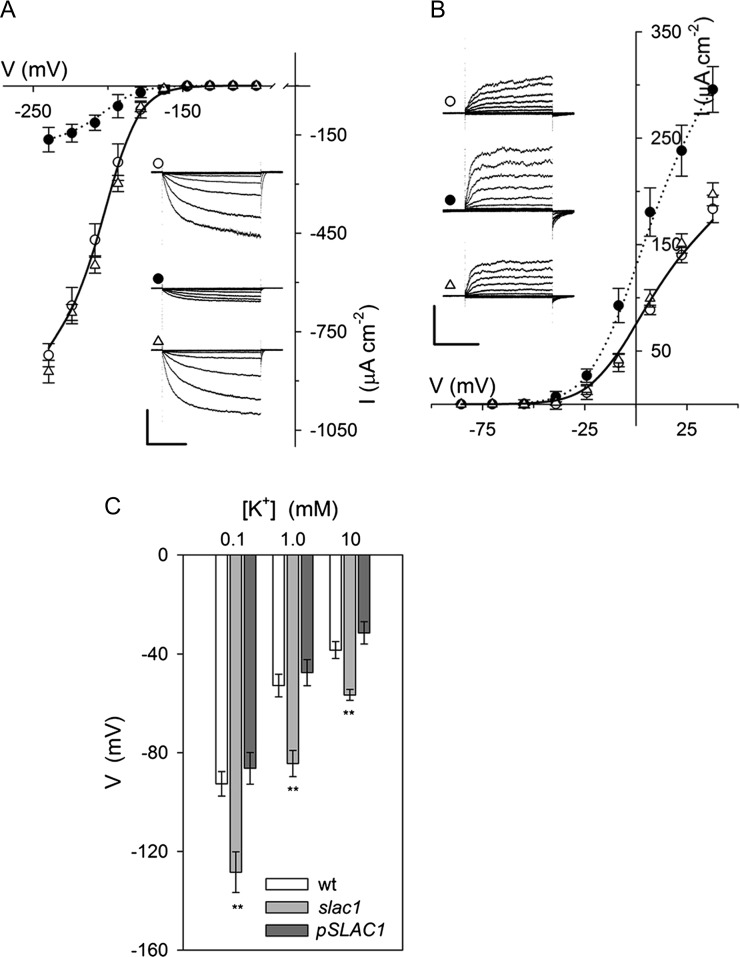Figure 1.
The slac1 mutant of Arabidopsis alters currents carried by both IK,in and IK,out and hyperpolarizes the membrane voltage. Data are means ± se of n ≥ 12 independent experiments for wild-type (open circles), slac1-1 (closed circles), and pSLAC1 (open triangles) plants. A, Steady-state currents recorded under voltage clamp for IK,in show a roughly 80% suppression of channel current. Curves are fittings of wild-type (solid line) and slac1-1 (dotted line) currents to a Boltzmann function (Table I). The inset shows current traces recorded under voltage clamp and cross referenced by symbol. Scale are as follows: vertical, 500 μA cm−2; horizontal, 2 s. slac1-1 currents are significantly different (P < 0.001) for all points negative of −180 mV. B, Steady-state currents recorded for IK,out under voltage clamp show a roughly 80% suppression of channel current. Curves are fittings of wild-type (solid line) and slac1-1 (dotted line) currents to a Boltzmann function (Table I). The inset shows representative current traces recorded under voltage clamp and cross-referenced by symbol. Scale are as follows: vertical, 200 μA cm−2; horizontal, 2 s. slac1-1 currents are significantly different (P < 0.001) for all points positive of −20 mV. C, Free-running voltages recorded from wild-type (wt), slac1-1, and pSLAC1 Arabidopsis with 0.1, 1, and 10 mm KCl outside. Values for the slac1-1 mutant differ significantly (**P < 0.001) from those of wild-type and pSLAC1 guard cells at all three KCl concentrations. Note that all values are likely to underestimate the true free-running voltage in this case, given the membrane input resistance (greater than 20 GΩ; Blatt and Slayman [1983]) and leakage currents (1–2 pA) typical of high-impedance electrometer amplifiers. Such leakage currents are insignificant as a background to clamp currents of ±300 to 500 pA, so they do not influence measurements under voltage clamp, but they are sufficient to displace the apparent voltage by +40 mV or more in the free-running (unclamped) cell.

